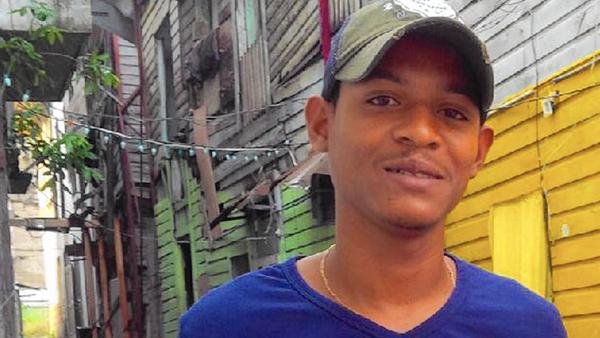Tracy Wilkinson writes for the LA Times about the transformation of Casco Viejo and it’s gang members.
Luis “Ricky” James, a former gang member, now leads tours through Panama City’s Casco Viejo district. (Tracy Wilkinson / Los Angeles Times)
One of the first stops on Antonio James’ tour of the gentrifying Casco Viejo district of Panama City is the spot where his brother was killed in a spray of bullets aimed at no one in particular.
Five years later, the former drug den houses the evangelical Union Church of Glory.
James, 31, and members of his extended family, all former street gang members, have launched guided strolls through the historic seafront enclave for visiting tourists who seem to be flocking to the quaint and increasingly trendy area, a mishmash of fabulously restored 19th century buildings, wooden clapboard houses and crowded, woebegone tenements. It looks a lot like parts of New Orleans, or maybe Havana in its better days.
Backing the former gangsters are a developer, evangelical preachers and business groups betting their own future prosperity on a plan to replace gang violence with economic opportunity.
Not so long ago, James and other members of his Ciudad de Dios gang (named after the notorious Brazilian version) were squatting in the old American Trade building, a holdover from the days of U.S. control of the Panama Canal. They sold drugs in the abandoned and dilapidated structure and prowled the streets to attack and rob tourists, by James’ own admission.
Enter K.C. Hardin, who bought the American Trade and embarked on a mission, now successful, to make it one of the most prestigious, and most expensive, hotels in Panama City. That meant dealing with the gangs.
Instead of evicting gang members or demanding they be jailed, Hardin said, he and other community leaders decided to include them, providing jobs and helping them start small businesses. That was coupled with a concerted effort to restore and upgrade many of the Casco Viejo’s neoclassical and Art Deco buildings.
“A rising tide has lifted their boats as well,” Hardin, 41, a former corporate banker from New York, said of the gangsters. “The neighborhood has totally changed.”
Parts of the Casco Viejo went from being dangerous to virtually crime-free.
“Used to be we only robbed the tourists. Now we work with them,” said Luis “Ricky” James, who is Antonio’s cousin and another gangster turned tour guide. Others have started a jazz club; still others a small restaurant-bar in a narrow alleyway.
No one says this is a surefire solution that can be applied far more broadly. Panama is said to still have about 200 gangs, and the Casco Viejo project is but a drop in the bucket.
Still, the gangs in Panama have not reached the same levels of lethal viciousness as seen in other Central American countries such as El Salvador and Honduras. And if just a handful choose employment opportunities over a life of violence and crime, that’s a positive development, several residents and law enforcement experts said.
Until recently, Panama’s approach to gangs, like that of many countries in the region, was heavy on police action and incarceration. Last year, the government announced a $35-million “safe neighborhoods” program nationwide aimed at bringing back gang members to law-abiding society. But the effort is still in its incipient stage.
“My life is changed, thank God,” Antonio James said as he guided two journalists through the Casco Viejo streets. After several stints in jail, James had three children and then met Hardin, who encouraged him to take classes for self-esteem and skills.
James left the gang formally in 2013 after nearly 15 years. He and the other former members now call their group Fortaleza, or Strength.
By mid-April, Fortaleza had taken about 500 visitors on tours this year, each paying about $25.
The tour started at an 1890 wooden building that serves as government-subsidized housing and where Victoria Griego, 93, tottered out of her bed to greet passersby.
James, in addition to the brother who was shot to death, has two sisters. He is now doing well enough that he can pay for their schooling; they plan to graduate from college, the first in his family to do so.
The tour goes past tenement buildings where children in underwear play in the streets while adults sit on crumbling stoops. James’ mother waves out the window from a third-floor flat.
“She is very proud of what I’m doing now,” he said. Children run up to him and give him a hug. “Tio!” they say, using the Spanish word for uncle.
Other highlights include a spectacular Masonic Lodge, an elementary school called Estados Unidos (United States) and a hip music bar, outside of which two young boys were shooting pigeons for upcoming lunch.
One danger is that the gentrification of Casco Viejo could lead to the displacement of many of the poorer residents if rents rise and developers get greedy.
Hardin says he and his group hope to avoid this.
“We want the recovery of the city core … to be inclusive and sustainable, and not destroy what made the neighborhood special to begin with,” Hardin said. “There is human history here. The hardest work is to protect and advance that.”
